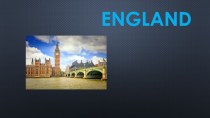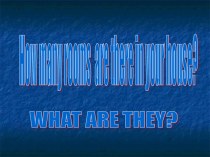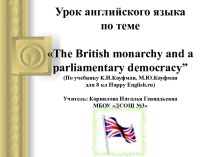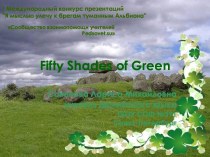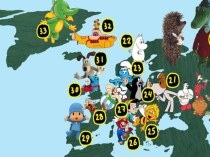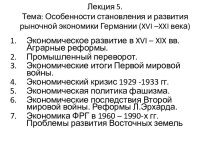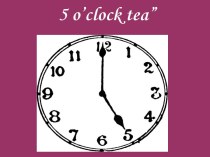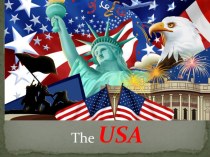- Главная
- Разное
- Бизнес и предпринимательство
- Образование
- Развлечения
- Государство
- Спорт
- Графика
- Культурология
- Еда и кулинария
- Лингвистика
- Религиоведение
- Черчение
- Физкультура
- ИЗО
- Психология
- Социология
- Английский язык
- Астрономия
- Алгебра
- Биология
- География
- Геометрия
- Детские презентации
- Информатика
- История
- Литература
- Маркетинг
- Математика
- Медицина
- Менеджмент
- Музыка
- МХК
- Немецкий язык
- ОБЖ
- Обществознание
- Окружающий мир
- Педагогика
- Русский язык
- Технология
- Физика
- Философия
- Химия
- Шаблоны, картинки для презентаций
- Экология
- Экономика
- Юриспруденция
Что такое findslide.org?
FindSlide.org - это сайт презентаций, докладов, шаблонов в формате PowerPoint.
Обратная связь
Email: Нажмите что бы посмотреть
Презентация на тему LONDON OLD AND MODERN. IT'S SYMBOLS AND SIGHTS
Содержание
- 3. The Tower Of London The Tower has
- 4. The White TowerThe White Tower is the
- 5. Black ravens at the TowerThere are
- 6. The BeefeatersThe Beefeaters used to guard the
- 7. Shakespeare's Globe TheatreThe globe theatre is one
- 8. Westminster Abbey The great glory of Westminster
- 9. St Paul's Cathedral Christopher Wren, the cathedral's
- 10. Trafalgar Square Nelson's Column, with the statue
- 11. Big BenThe tower was built in 1858.
- 12. Big BenThe Clock Tower is the largest
- 13. Downing Street, Building 10Downing Street, Building 10,
- 14. The British MuseumThe British Museum is a
- 15. Madam Tussaud’s MuseumMadam Tussaud’s is the renowned
- 16. Madam Tussaud’s MuseumThere are 500 wax figures of outstanding people at the museum.
- 17. The Sherlock Holmes' MuseumIn 1990, a museum
- 18. NATURAL HISTORY MUSEUM The Natural History Museum
- 19. Red ArrowsOn the traditional double-decker there were
- 20. Black CabsMost of the official taxies in
- 21. Telephone boxesPrototypes public telephone booths appeared in
- 22. Telephone boxesn 1924, the government arranged a
- 23. London EyeLondon Eye is a beautiful landmark
- 24. London EyeIn 2000 a temporary ferris wheel
- 25. Скачать презентацию
- 26. Похожие презентации
The Tower Of London The Tower has been many things: a palace, a fortress, a prison, a place of execution, a Zoo. Today, it is best known as a historical museum. About 150 people and six
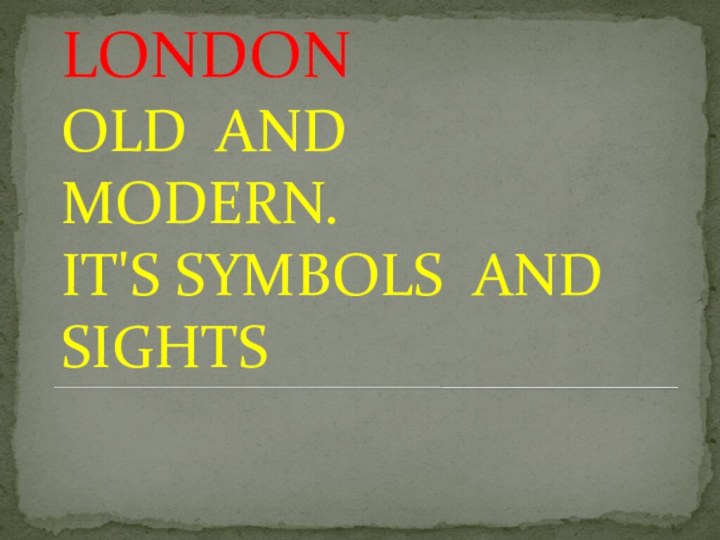
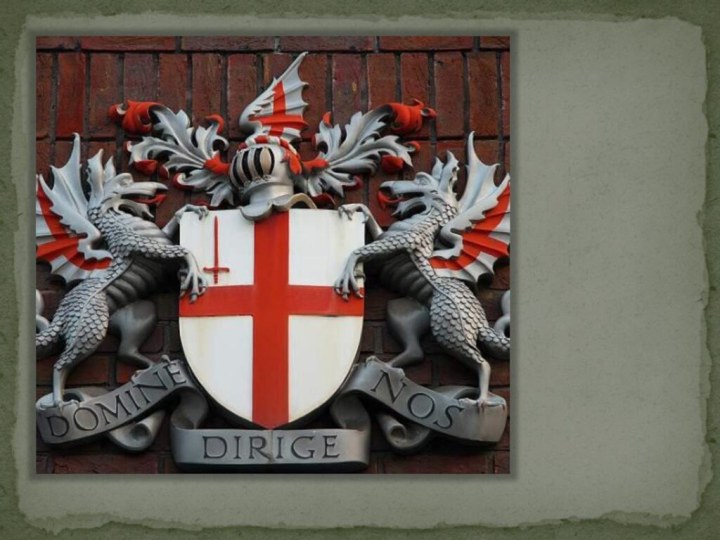
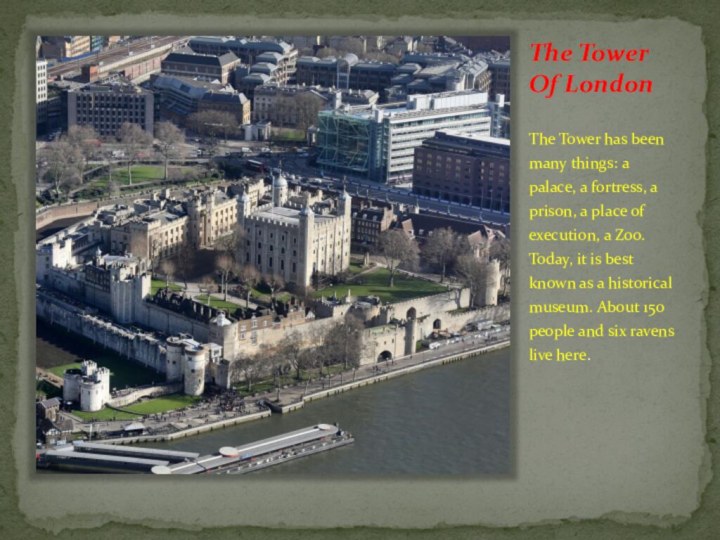

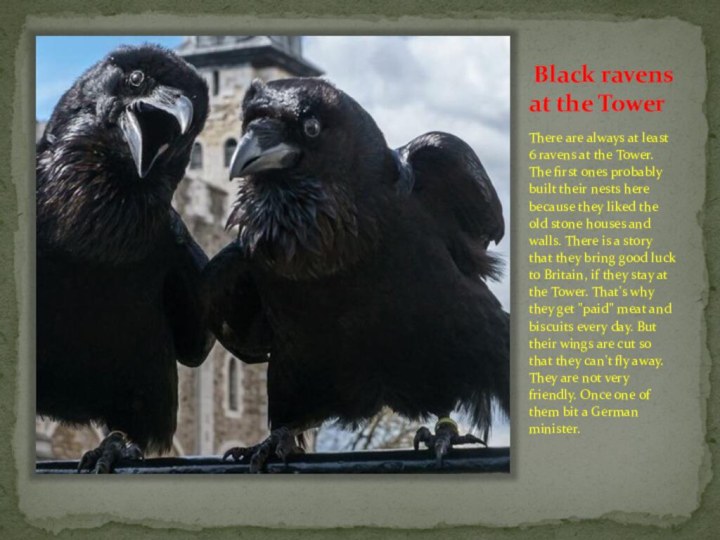
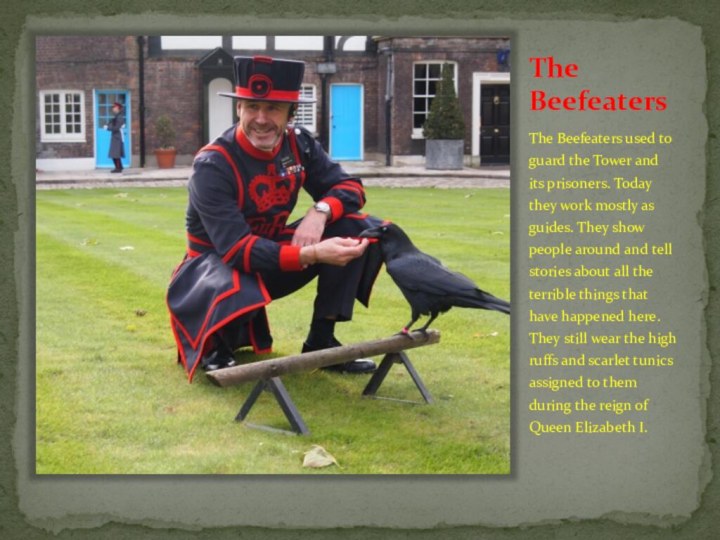
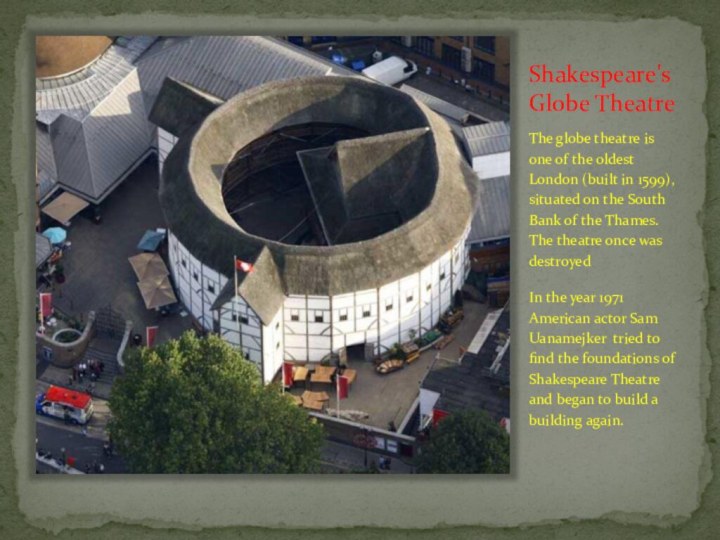
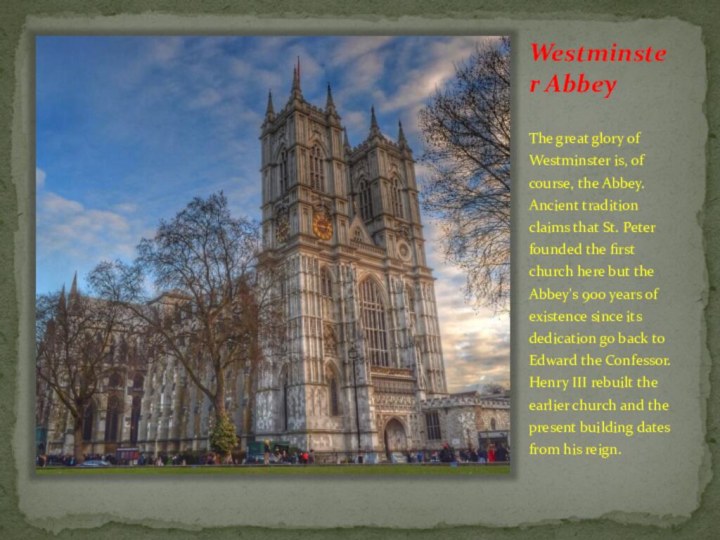
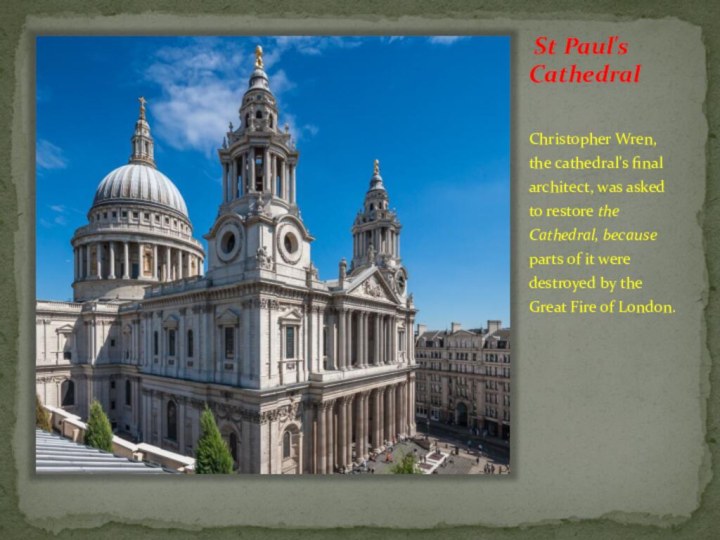
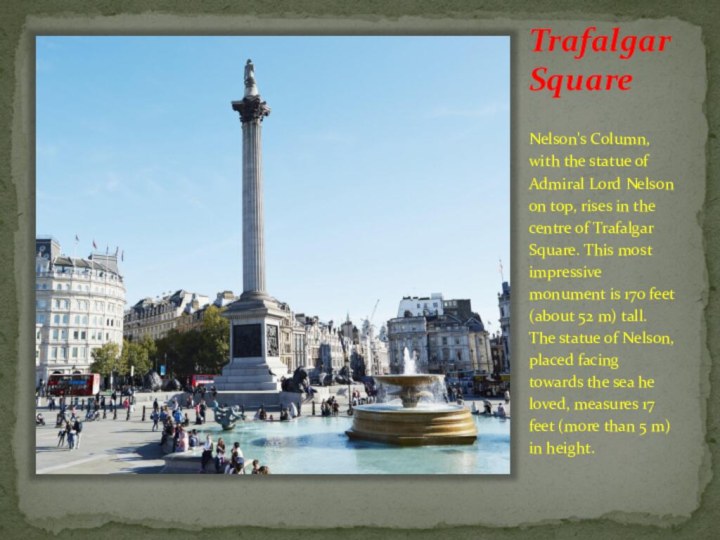

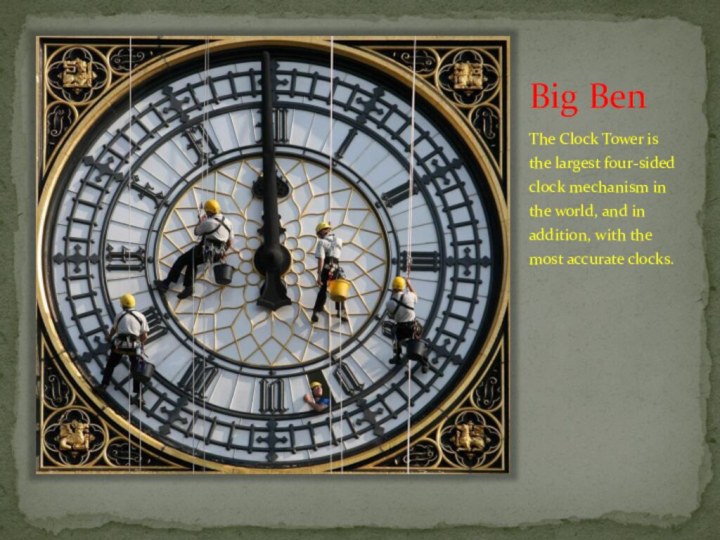

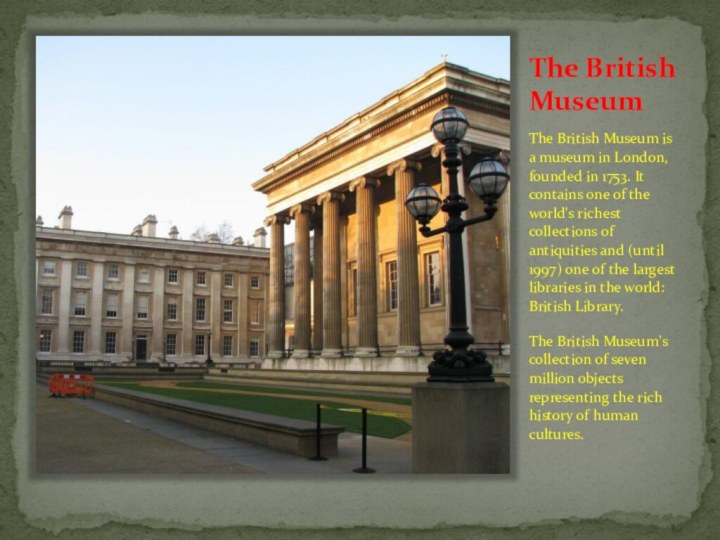
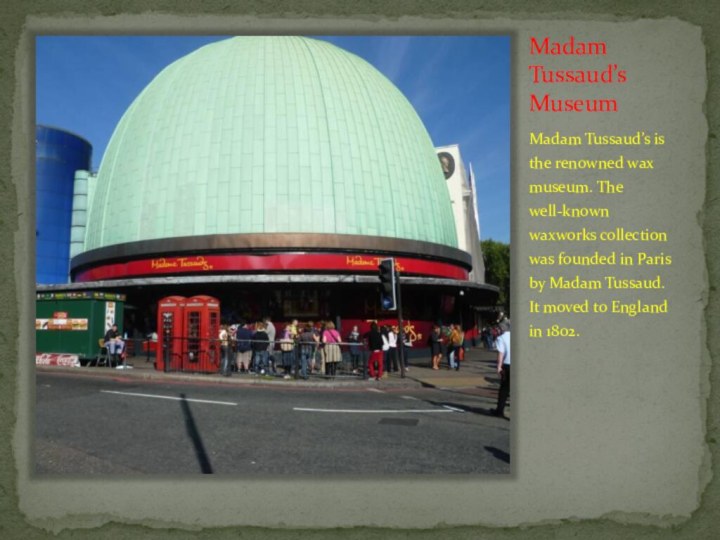

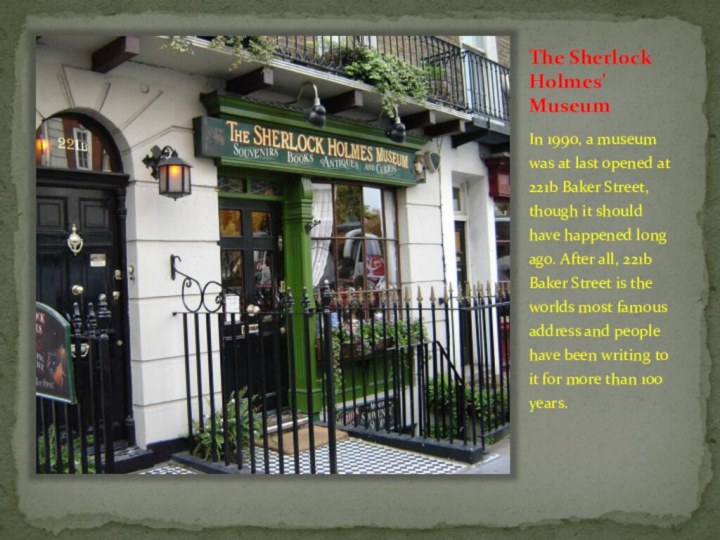
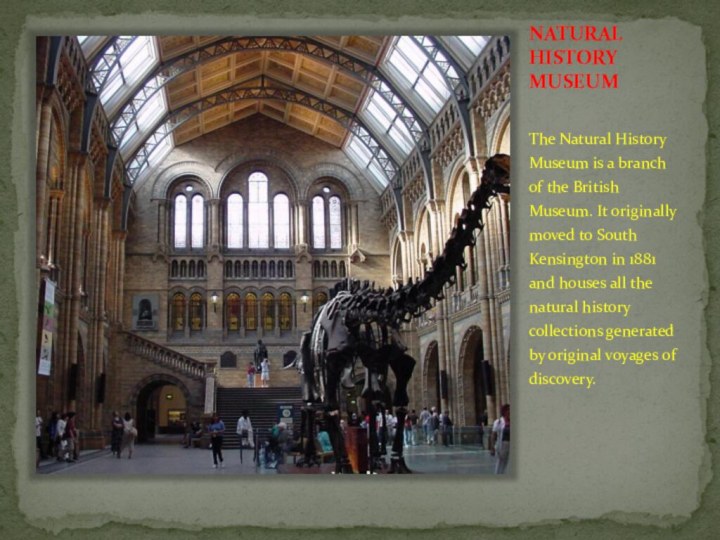
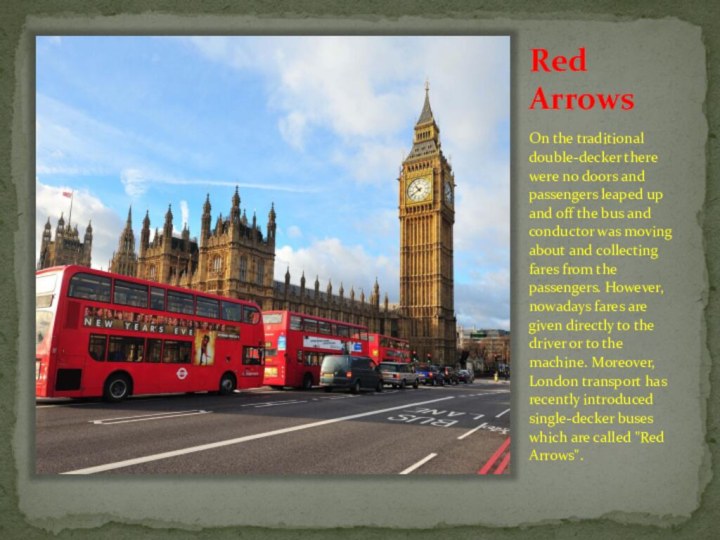
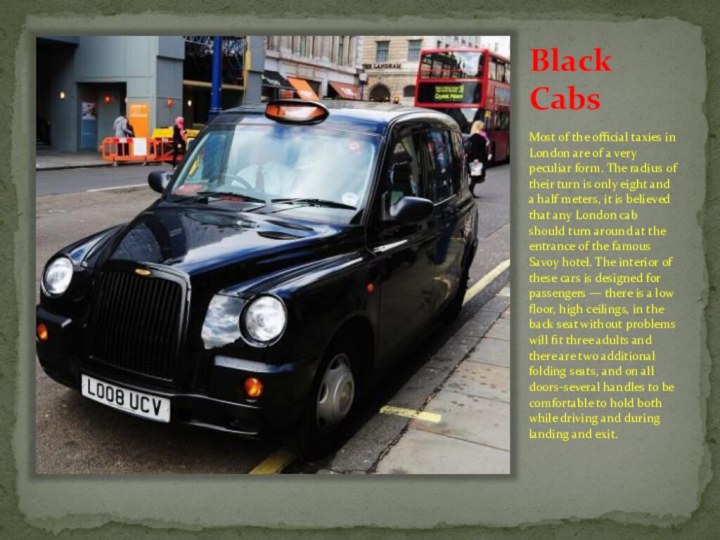
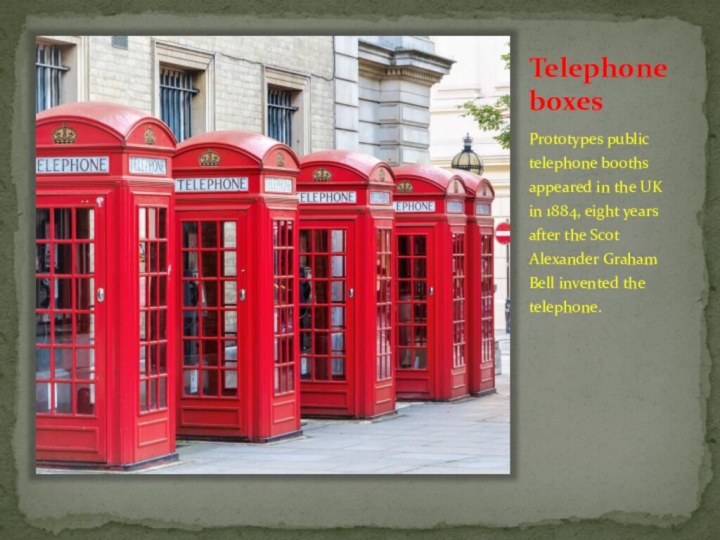
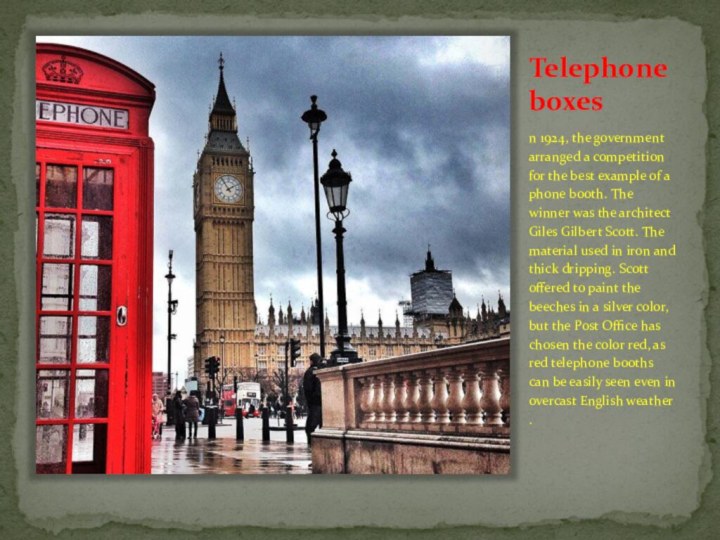
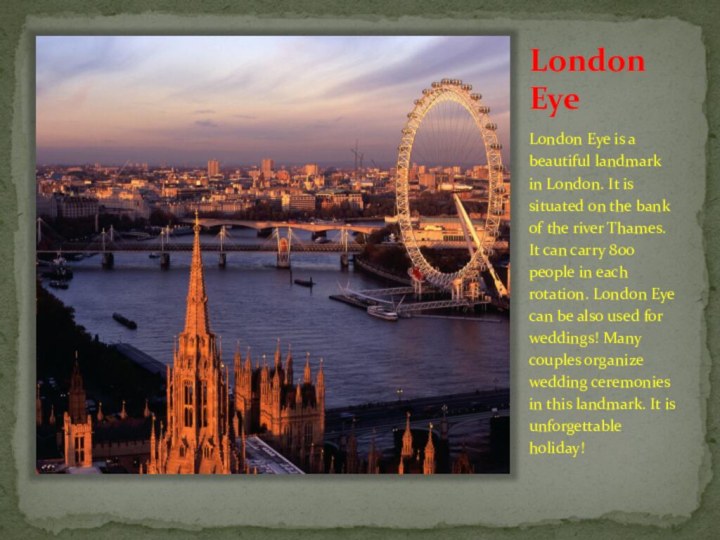

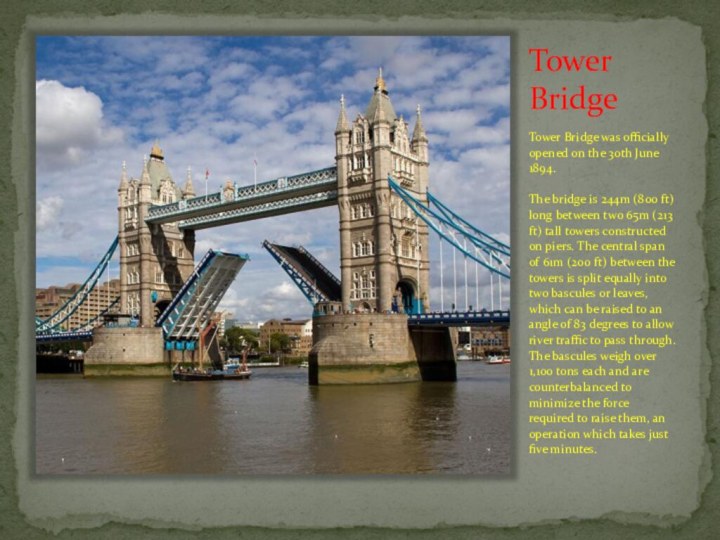
Слайд 4
The White Tower
The White Tower is the oldest
of them. It was built at the time of
William the Conqueror.
Слайд 5
Black ravens at the Tower
There are always
at least 6 ravens at the Tower. The first
ones probably built their nests here because they liked the old stone houses and walls. There is a story that they bring good luck to Britain, if they stay at the Tower. That's why they get "paid" meat and biscuits every day. But their wings are cut so that they can't fly away. They are not very friendly. Once one of them bit a German minister.
Слайд 6
The Beefeaters
The Beefeaters used to guard the Tower
and its prisoners. Today they work mostly as guides.
They show people around and tell stories about all the terrible things that have happened here. They still wear the high ruffs and scarlet tunics assigned to them during the reign of Queen Elizabeth I.
Слайд 7
Shakespeare's Globe Theatre
The globe theatre is one of
the oldest London (built in 1599), situated on the
South Bank of the Thames. The theatre once was destroyedIn the year 1971 American actor Sam Uanamejker tried to find the foundations of Shakespeare Theatre and began to build a building again.
Слайд 8
Westminster Abbey
The great glory of Westminster is, of
course, the Abbey. Ancient tradition claims that St. Peter
founded the first church here but the Abbey's 900 years of existence since its dedication go back to Edward the Confessor. Henry III rebuilt the earlier church and the present building dates from his reign.
Слайд 9
St Paul's Cathedral
Christopher Wren, the cathedral's final architect,
was asked to restore the Cathedral, because parts of
it were destroyed by the Great Fire of London.
Слайд 10
Trafalgar Square
Nelson's Column, with the statue of Admiral
Lord Nelson on top, rises in the centre of
Trafalgar Square. This most impressive monument is 170 feet (about 52 m) tall. The statue of Nelson, placed facing towards the sea he loved, measures 17 feet (more than 5 m) in height.
Слайд 11
Big Ben
The tower was built in 1858. The
project architect was Augustus Pugin. The height of the tower
and spire is 96.3 m. In fact, Big Ben is the largest of the six bells of Westminster Palace in London. But it has long been associated with the name of the Clock Tower, which in September 2012 was officially called “Elizabeth Tower”.
Слайд 12
Big Ben
The Clock Tower is the largest four-sided
clock mechanism in the world, and in addition, with
the most accurate clocks.
Слайд 13
Downing Street, Building 10
Downing Street, Building 10, or
"Number 10", as it is called in Britain -
one of the most famous addresses in the world, as it was the home of the British prime minister since 1730. In addition, it is also a very busy place, where hundreds of people work.
Слайд 14
The British Museum
The British Museum is a museum
in London, founded in 1753. It contains one of
the world's richest collections of antiquities and (until 1997) one of the largest libraries in the world: British Library.The British Museum's collection of seven million objects representing the rich history of human cultures.








